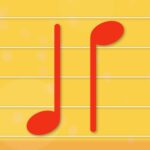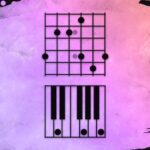Build Your Skills
Learn music theory Train your ears Track your tempoRead Now
Get the Newsletter
Categories
- | BeatMirror (10)
- | HearEQ (11)
- | Waay (22)
- | WaayFinder (1)
- Audio (16)
- For musicians (34)
- Guitar (2)
- Music theory (15)
- News (42)
- Startup stories (2)
- Tutorial (4)
Keep in Touch
About Ten Kettles
We love music, we love learning, and we love building brand new things. We are Ten Kettles.
Read more >-
August 11, 2015
Soundcheck your rehearsals for great band sound
You’ve just arrived at rehearsal and you’re really excited to dig in. You plug in your instrument, jump into the first jam and… you can barely hear your instrument. So, you turn up… but now the drummer says you’re too loud. The vocalist then complains that her microphone keeps electrocuting her face, and under it all, you can’t help noticing that the bass sounds like a swamp. Does any of this sound familiar? If so, you should start soundchecking your rehearsals. This article explains how.
First, for the purposes of this article, let’s assume a couple things:
- Your band has a pretty typical “rock band” instrumentation: drums, bass, guitar/keys, vocals.
- All instruments are amplified, except for the drums. (That means that the vocals are going through a soundboard and speakers.)
Even if your situation is slightly different, a lot of the same principles apply, so read on.
Speakers
Once you step into your jam space, one of the first things you should think about is where the amps are sitting. Make sure two things are happening:
- Each amp should be facing the head of the person playing through it, at least 6 feet (a couple metres) away. Got a small amp that’s facing your knees instead? Put it on a chair.
- The bass amp should be, at least partly, facing the drummer.
This will fix a lot of potential problems. That case where you can’t hear your instrument, but your bandmate says it’s too loud? Better amp placement will help.
Soundcheck
Once the speakers are setup, here’s your three-step soundcheck:
- Drums and bass. If the drums are the only un-amplified instrument, then they are your reference point for all other instruments. Have the bassist and drummer start playing together, and adjust the bass volume so that it balances well with the drums. The volume knob on the instrument itself should be set to about 80% or higher and then left alone. Make all volume changes at the amp. Next, turn down the highs on the bass amp a little bit (maybe to 30% to start) to leave room for the guitars, keys, and vocals. The bass should sound a little dull when it’s playing with just the drums. This is good: it means there’s room in the sound for all the other instruments to come.
- Guitars and keys. You’ve got a great sounding drum and bass, now it’s time to add guitars and keys. The main goal here is to avoid a muddy band sound, because with a bass guitar and two or three mid-range instruments like guitars or keyboards playing at once, it’ll get muddy fast if you’re not careful. Start by turning down the lows on your guitars/keys to about 30% (to start) to make room for the bass. Now have all instruments so far play at once, and adjust the guitar and keys’ volume so that everything’s balanced. If you’re not sure if a guitar is too loud or quiet, compare it with the drums. The un-amplified drums are your reference point for good volume.
- Vocals. Start by getting a decent vocal sound on its own. Use the graphic or parametric EQs on the sound board to cut out the mud (~250–500 Hz) and boost the presence (~4 kHz). With some practice, your singer will learn the best EQ tweaks to make her voice sound great, and this vocal soundcheck can become a fast process. Male voices tend not to go below around 80 Hz, and for female voices the lower limit is 160 Hz, so turn down those ranges with a high-pass filter to keep the signal clean. When heard on its own, the vocals should feel a little light and a little thin. Now it’s time to bring in the whole band and make any final EQ tweaks.
Once you get some practice soundchecking your rehearsals, you’ll be able to do it in a snap, especially as everyone gets better and better at amp placement, knowing their instruments, and listening to their bandmates. There’s no good reason why you can’t have good sound at band practice, every time.
And that’s it! Next time we’ll talk about feedback and that nasty electric shock the microphone sometimes sends your way. Now, if the idea of training your ears to hear different frequencies appeals to you—and I hope it does, as it’s super useful for EQing live shows, your recordings, and more—we made a tool to help train those ears. If you’ve got an iPhone or iPad, check out HearEQ.



Comments